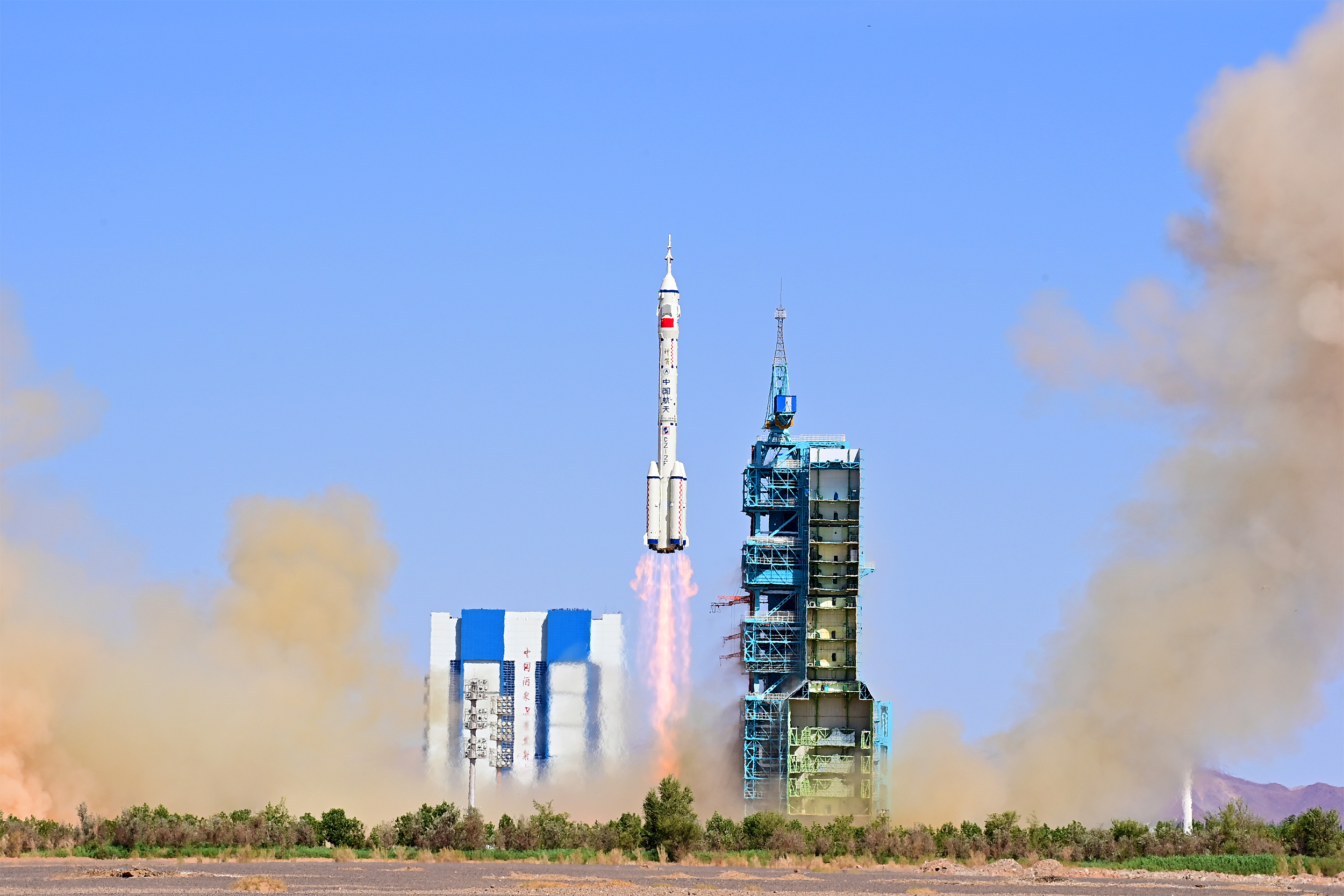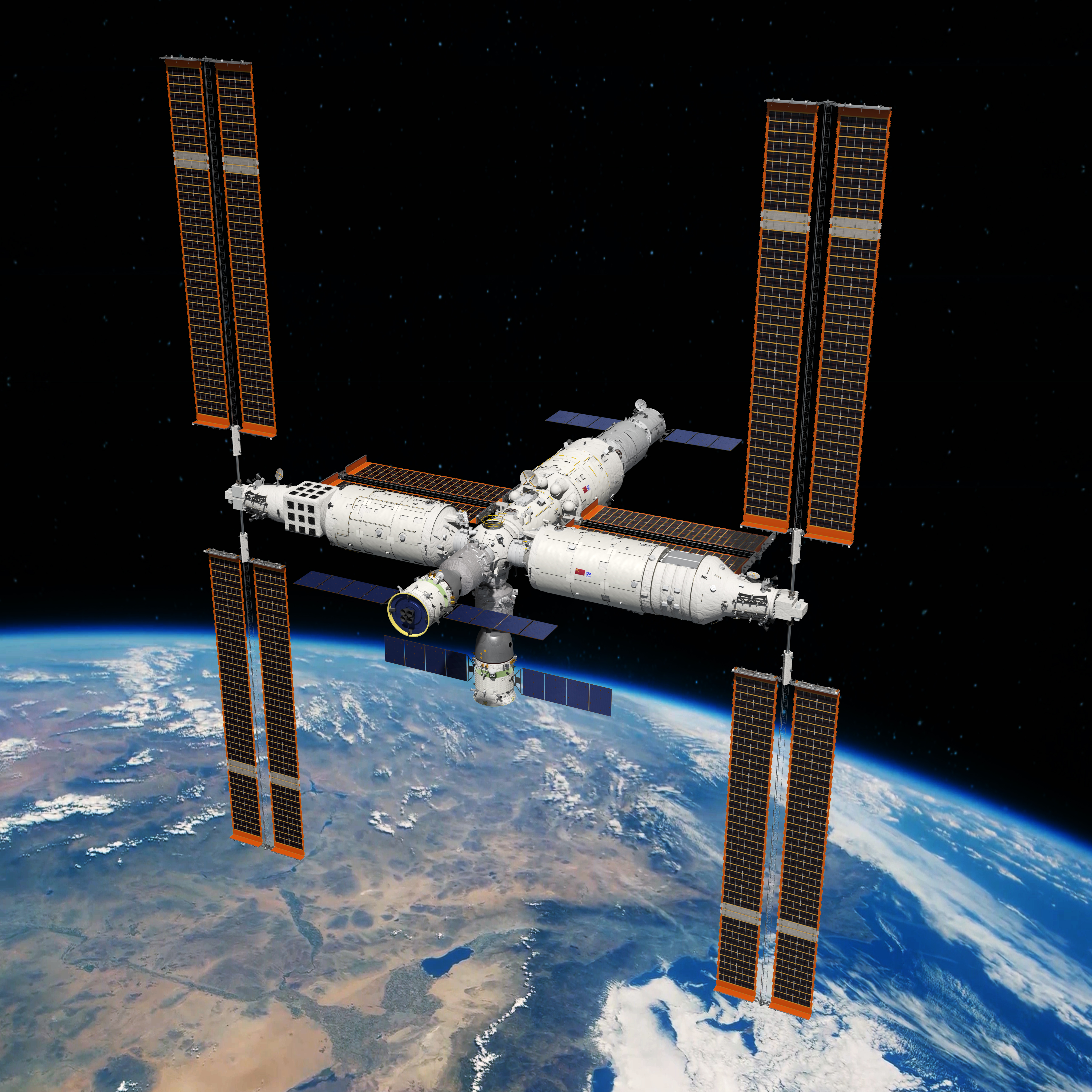Three Decades' Quest: To Hear China's Manned Spaceship Roar

China on June 5 launched the crewed spaceship Shenzhou-14 from Jiuquan Satellite Launch Center in northwest China.(PHOTO: VCG)
By Staff Reporters
China launched its Shenzhou -14 spaceship on June 5, sending a crew of three taikonauts to the Tiangong space station, for a six-month mission.
During the Shenzhou-14 crew's stay in orbit, the Wentian and Mengtian lab modules will be launched to dock with the Tianhe core module, completing the three -module combination of China's space station.
The launch reinforces Chinese people's desire and imagination for space since time immemorial, as reflected in the famous Tang Dynasty poet Li Bai's verse, "By dint of wind, a roc soars up high into the boundless sky."
After decades of continuous effort from generations of participants, the nation finally has a home in outer space.
Thirty years, three steps
On April 24, 1970, China launched its first satellite Dong Fang Hong 1 into Earth's orbit. In the same year, Qian Xuesen, the father of China's space program, introduced his human spaceflight project, which was unfortunately cancelled due to lack of funds.
After a hiatus of 17 years, the restarted China Manned Space Program (CMS) was formally approved in 1992, with a three-step blueprint—launching and returning crewed spaceships, launching a space lab with capabilities of extravehicular activities (EVAs), and building a long-term crewed space station.
A milestone was reached when China launched astronaut Yang Liwei into orbit atop its own Long March-2F rocket in 2003, making it the third country to independently conduct crewed spaceflight.
Five years later during the Shenzhou-7's flight, two astronauts, Zhai Zhigang and Liu Boming completed the nation's first EVAs on October 27, 2008, wearing Feitian extravehicular space suits developed by China.
Since the first spaceship Shenzhou-1 was launched in 1999, CMS has successfully launched nine crewed spaceships, sending 14 taikonauts into space without any fatalities.
By launching Tiangong space station in April 2021, China has accomplished the first two steps and advanced closer to a space station era.
"The country's call is the goal I'll work for"
Across generations, a large number of scientists and researchers have devoted themselves into the aerospace sector.
Among them, Wang Yongzhi, being appointed as first chief designer of China's manned space program in his sixties, played a crucial role.
During his 14 years as chief designer (1992-2006), he presided over the engineering design of four unmanned flight tests, as well as Shenzhou-5 and Shenzhou-6 manned spaceflights. "The country's call is the goal I'll work for," said Wang.
Manned space missions are never an easy task, but Wang made a bold proposal. He decided to launch manned spaceships without animal experiments.
It required courage and wisdom, said Wang, adding that the spacecraft technology adopted by China's manned space program should be more advanced than other countries, otherwise it would be meaningless.
To ensure safety, Wang proposed the design of manned spaceflight orbits that could meet various requirements, and a life-saving plan of emergency search and rescue at sea for astronauts during the ascent stage of the carrier rocket.
He also broke down the entire launch procedures and conducted experiments to simulate space flight under the realistic conditions to cut experiment costs. Thanks to this, many technical problems were resolved.
After receiving the Supreme State Science and Technology Award in 2004, Wang became a senior consultant for the CMS program. Today, the research and development of CMS under Wang's guidance has brought up a generation of younger scientists.

Tiangong Space Station. (PHOTO: China Aerospace Science and Technology Corporation)
Open to the world
After completing the China's space station in 2022, it will enter a new phase of application and development that will span more than 10 years, according to Hao Chun, director of CMSA.
Though the U.S. Wolf Amendment tried to hinder China's quest for space adventure, China has shown an open and inclusive attitude for the use of its self-developed space station.
In 2019, nine international cooperation projects from seventeen countries were selected by CMSA, including space astronomy, microgravity fluid physics and combustion science, earth science, new technologies, space life sciences and biotechnology.
In addition, China plans to launch its first large space survey telescope in 2023 to carry out wide-area space surveys.
"As always, we welcome more countries to join us in conducting research in space," said Yang Liwei, current director of CMS engineering office.


